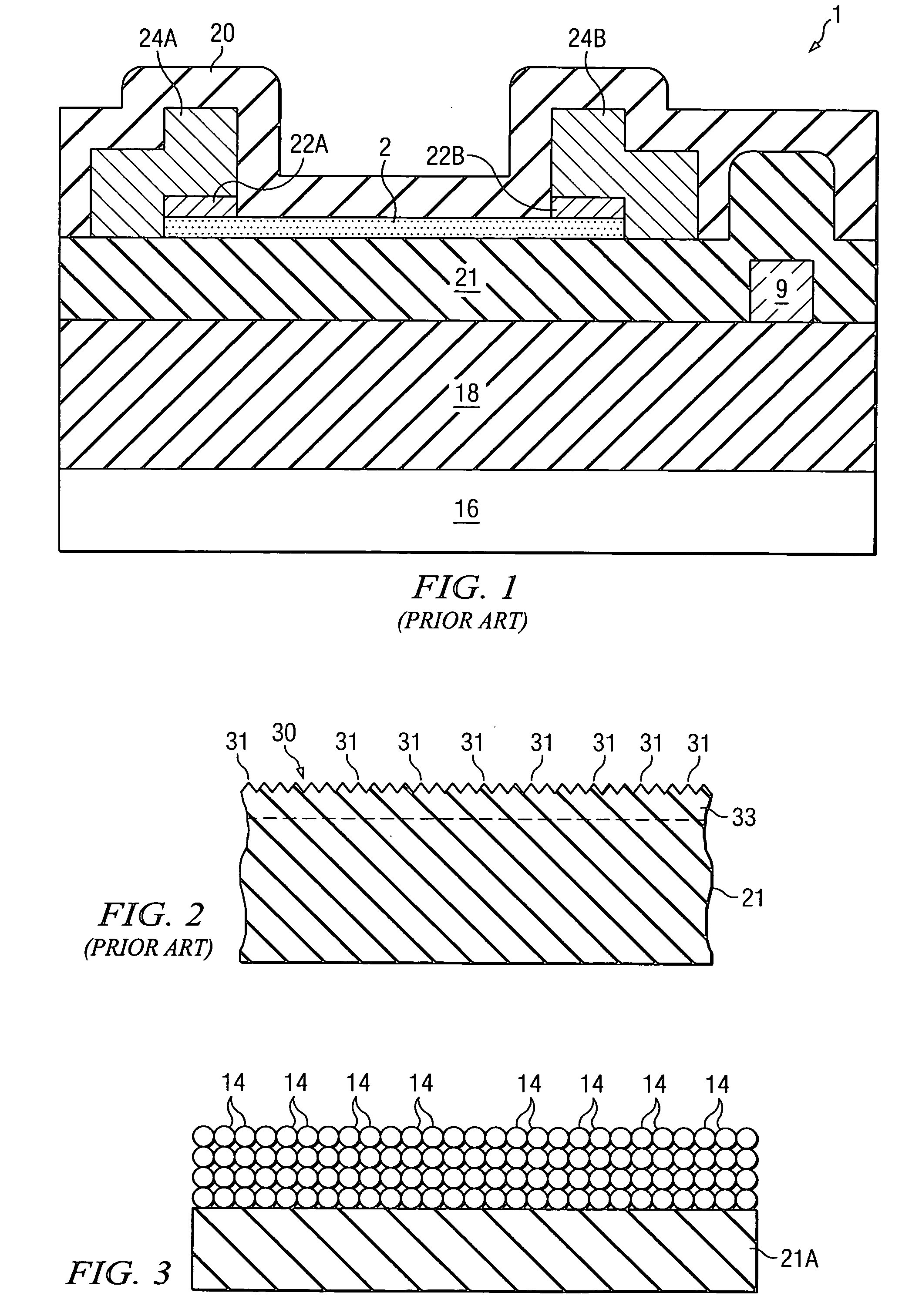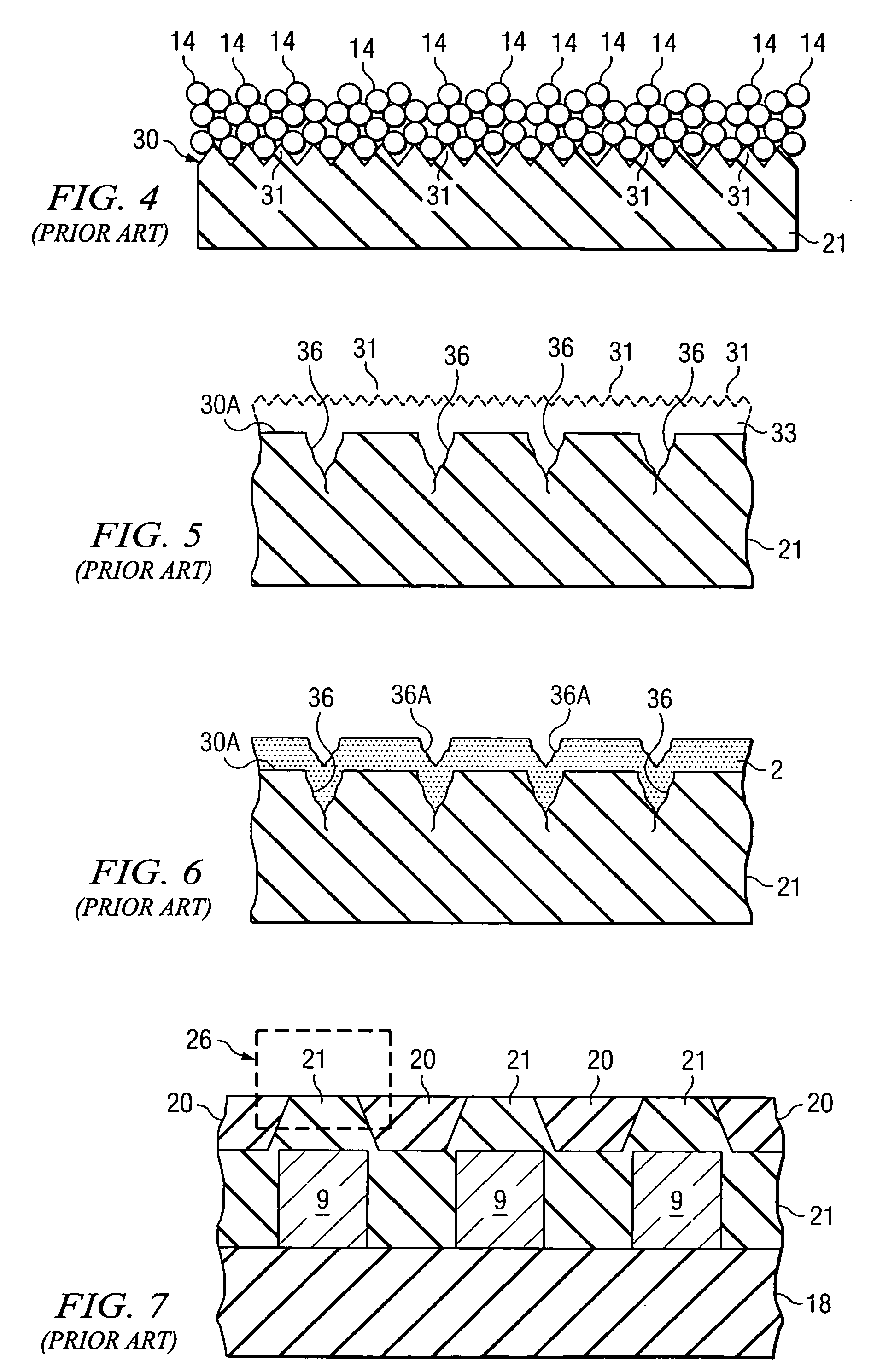Structure and method for minimizing substrate effect on nucleation during sputtering of thin film resistors
a thin film resistor and nucleation effect technology, applied in the field of semiconductor structure, can solve the problems of chemical bonding, damage, damage, etc., and achieve the effects of avoiding surface damage, improving the nucleation of material being deposited, and inexpensive integrated circuit thin film resistor structur
- Summary
- Abstract
- Description
- Claims
- Application Information
AI Technical Summary
Benefits of technology
Problems solved by technology
Method used
Image
Examples
Embodiment Construction
[0033] Referring to FIG. 9, pre-metal dielectrics region 18 is formed on silicon substrate 16, which could be an epitaxial silicon layer formed directly on a semiconductor wafer. Region 18 includes a dielectric layer 18A formed on the upper surface of silicon layer 16. An arrangement of optional parallel polycrystalline silicon strips 9B can be formed on the upper surface 18-1 of dielectric layer 18A to form a first dummy fill layer, and another dielectric layer 18B is formed on surface 18-1 of dielectric layer 18A and the first dummy fill layer 9B. A layer of spaced metallization strips 9A and / or other metallization interconnect pattern (not shown) forms an optional second dummy fill layer on a chemically / mechanically polished surface 18-2 of dielectric layer 18B. A dielectric layer 18C is formed on surface 18-2 of dielectric layer 18B and the metallization pattern 9A. The upper surface 18-3 of dielectric layer 18C is planarized by a conventional chemical / mechanical polishing proce...
PUM
| Property | Measurement | Unit |
|---|---|---|
| Lattice constant | aaaaa | aaaaa |
| Thickness | aaaaa | aaaaa |
| Thickness | aaaaa | aaaaa |
Abstract
Description
Claims
Application Information
 Login to View More
Login to View More - R&D
- Intellectual Property
- Life Sciences
- Materials
- Tech Scout
- Unparalleled Data Quality
- Higher Quality Content
- 60% Fewer Hallucinations
Browse by: Latest US Patents, China's latest patents, Technical Efficacy Thesaurus, Application Domain, Technology Topic, Popular Technical Reports.
© 2025 PatSnap. All rights reserved.Legal|Privacy policy|Modern Slavery Act Transparency Statement|Sitemap|About US| Contact US: help@patsnap.com



